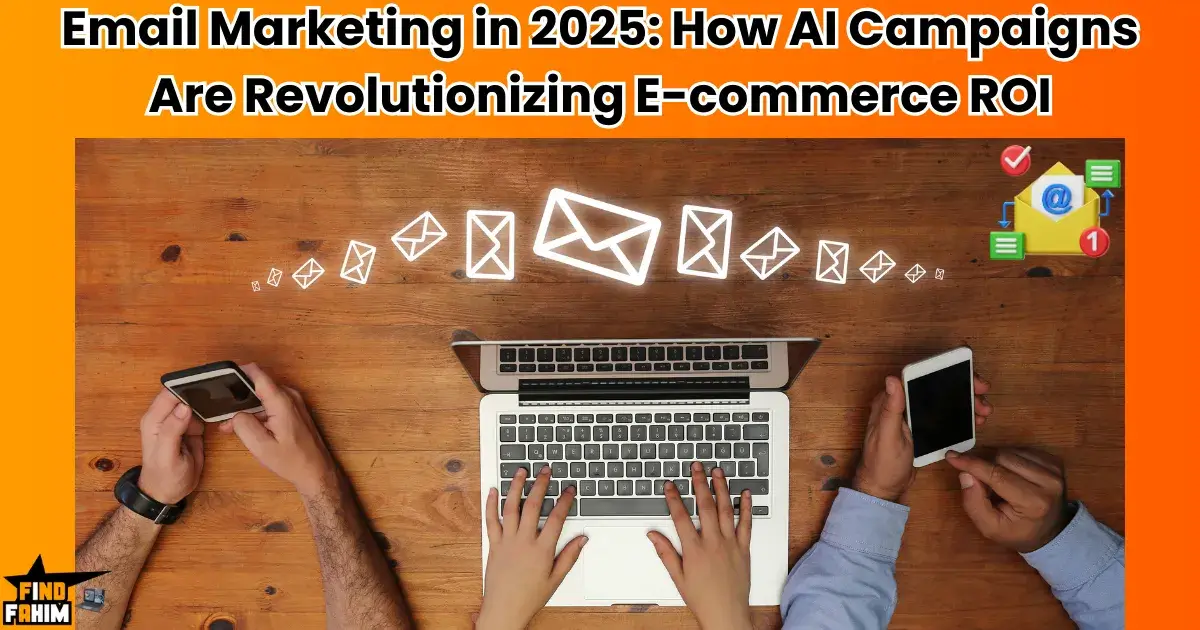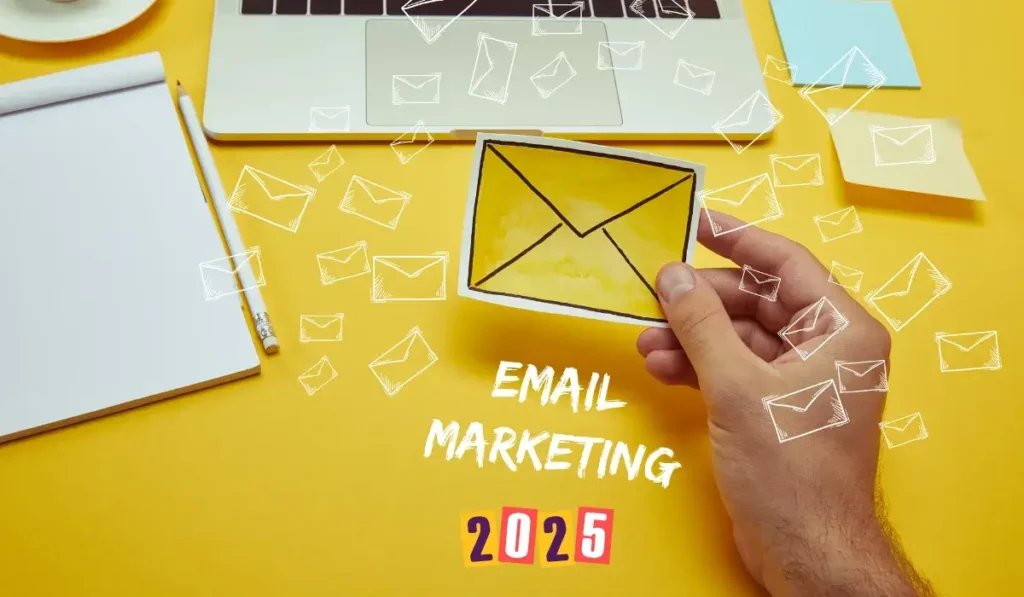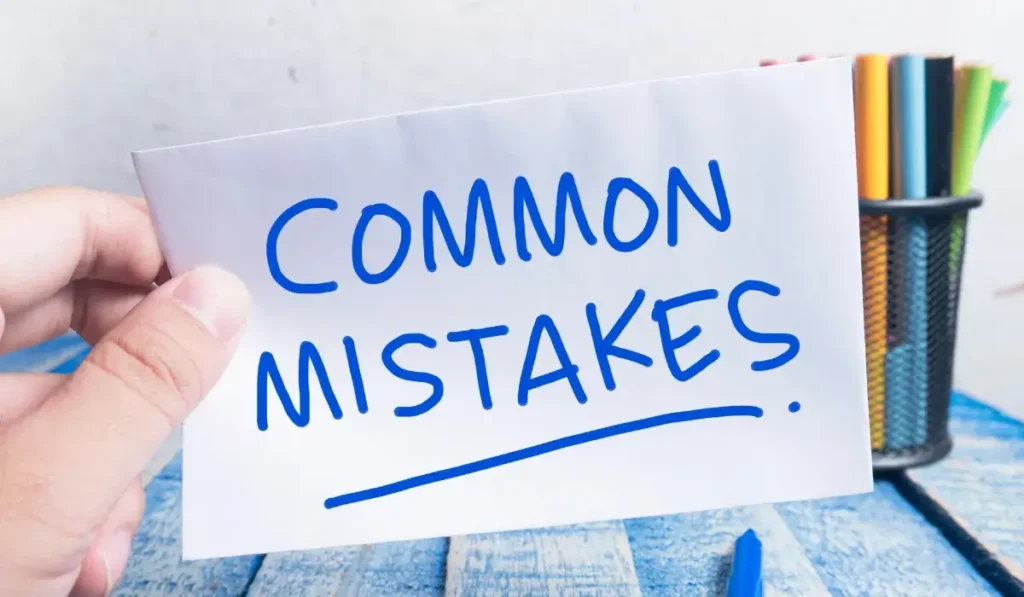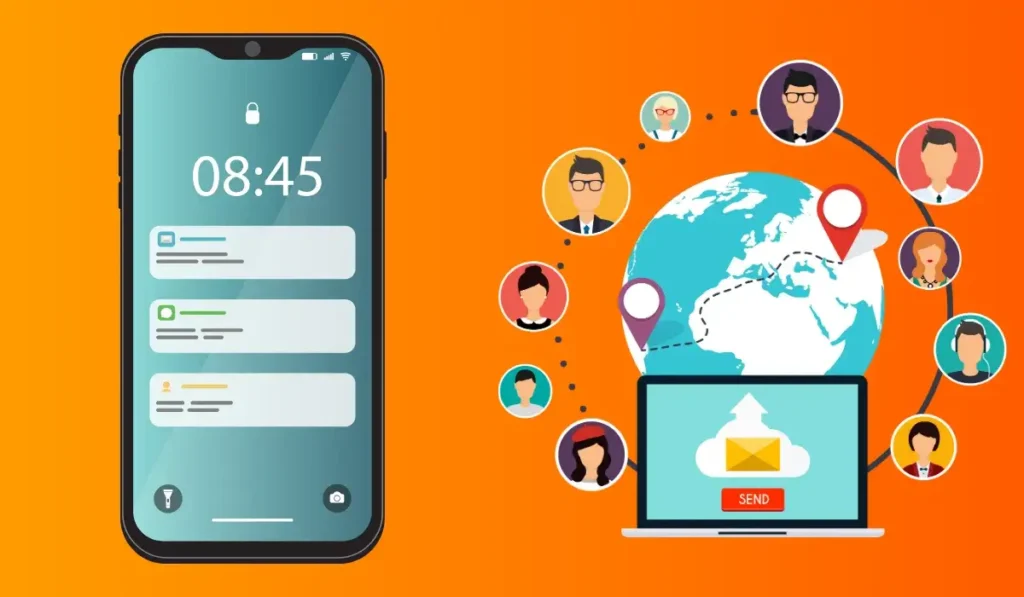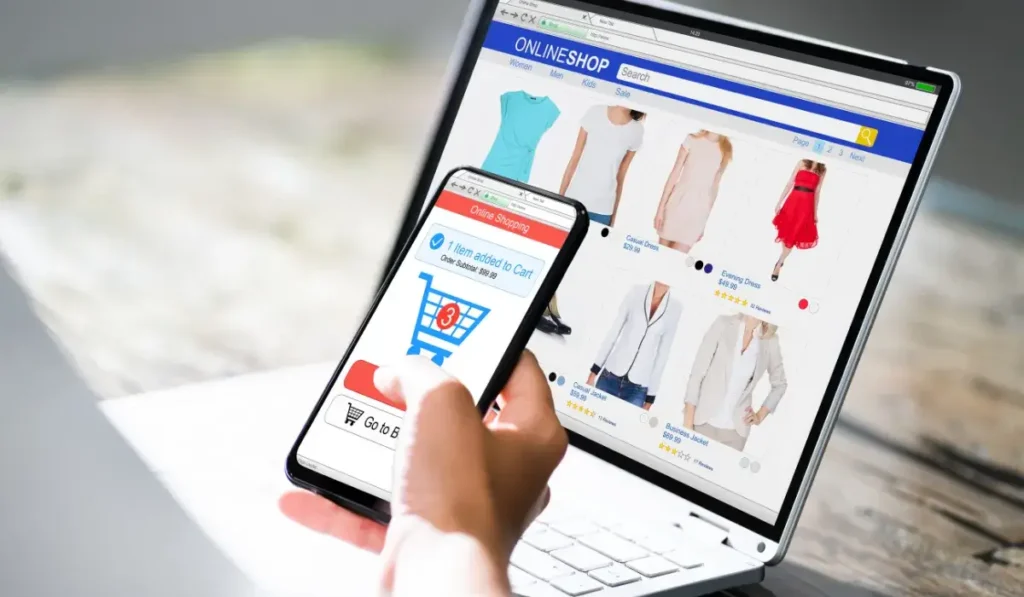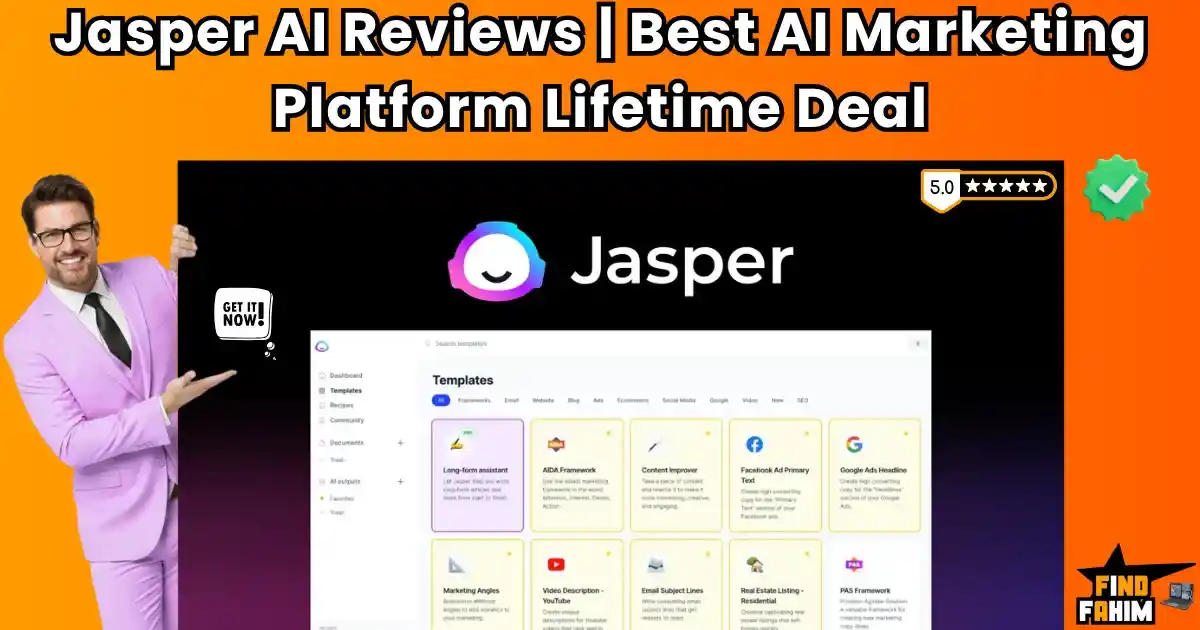Table of Contents
ToggleThe Evolution of Email Marketing: A Brief Overview
Email marketing has grown into a powerhouse, but its humble beginnings might surprise you. When it all started, businesses sent basic, one-size-fits-all emails that were often ignored. But over the years, it transformed. I’ve been amazed to see how technology, creativity, and strategy turned email into the personal and persuasive tool it is today.
In the 1990s, email was primarily a digital replacement for postal mail. Then, in the 2000s, automation began shaping the industry, allowing businesses to send more targeted messages. Fast forward to today, and AI-driven campaigns are making emails more engaging and data-driven than ever.
This evolution isn’t just about the tools. It’s about the way emails have become personal—almost like a conversation between you and a trusted friend. Every time you receive a discount code for your favorite item, you’re experiencing the refined art of email marketing. From static promotions to dynamic, tailored experiences, email has come a long way.
Why Email Marketing Is Still Relevant in 2025
Even in 2025, email marketing holds its ground as one of the most effective marketing strategies. You might wonder, “Why email when social media and influencer campaigns are booming?” The answer lies in its directness and reliability.
Unlike social media, where algorithms decide whether your post reaches your audience, email guarantees delivery to your subscribers’ inbox. This direct connection ensures your message gets seen. Plus, it’s personal. With AI tools, emails can now address customers by name, offer relevant product suggestions, and even predict their preferences.
Another reason email marketing remains unbeatable is its ROI. Studies show that for every dollar spent, businesses earn an average of $36. And that’s just scratching the surface. Whether it’s a small business or a large enterprise, email marketing remains the bridge between brands and their customers in a world full of fleeting trends.
What Is Email Marketing and Why Is It Essential for Your Business?
Understanding the Concept of Email Marketing
Email marketing is the art and science of using email to connect with your audience. At its core, it’s about building relationships and fostering loyalty while driving sales. Imagine having a tool that lets you speak directly to your customers, offering them value while promoting your business. That’s email marketing in a nutshell.
The goal? To nurture leads, keep your audience engaged, and encourage repeat purchases. For example, when you receive a birthday discount from your favorite store, that’s email marketing doing its magic. It’s not just about sales—it’s about creating a connection.
Key Benefits of Email Marketing for Your Business
Email marketing is essential for businesses of all sizes, and here’s why:
- High ROI: With a return of $36 for every $1 spent, email marketing consistently outshines other marketing channels.
- Direct Communication: Unlike social media, emails land directly in your audience’s inbox.
- Versatility: Use it for promotions, updates, newsletters, or even personalized recommendations.
For example, a small bakery used email campaigns to share recipes, promotions, and customer stories, resulting in a 40% increase in sales.
How Email Marketing Drives Customer Engagement and Loyalty
Personalized emails are like a warm handshake from your brand. They make your customers feel seen and valued. Imagine receiving an email that says, “Hi [Your Name], we noticed you love chocolate cake—here’s 10% off your next order!” That’s engagement.
Businesses that use email marketing effectively create a sense of loyalty. For instance, a clothing brand used personalized drip campaigns to share styling tips, and customers reported feeling more connected to the brand. When done right, email marketing is more than a sales tool—it’s a loyalty builder.
What Are Drip Campaigns and How Do They Work?
Introduction to Drip Campaigns
Drip campaigns are a series of automated emails sent to subscribers based on their actions or interests. Think of them as a gentle tap on the shoulder—a way to guide your audience through their journey with your brand.
Here’s an example: A new subscriber joins your list. Over the next few days, they receive:
- A welcome email introducing your brand.
- A follow-up email sharing your best-selling products.
- A final email offering a discount to encourage their first purchase.
Drip campaigns are about timing and relevance. They ensure your audience gets the right message at the right moment.
Why Drip Campaigns Are Perfect for E-commerce
For e-commerce, drip campaigns are the secret sauce. They’re automated, yet they feel personal. For example, if someone abandons their cart, a drip campaign can remind them of their items, offer a discount, or share testimonials to nudge them toward completing their purchase.
By automating these touchpoints, businesses can save time while increasing conversions. One brand reported a 30% boost in sales by using abandoned cart drip emails. For e-commerce, drip campaigns are a must.
How AI Is Enhancing Drip Campaigns
AI is revolutionizing drip campaigns by making them smarter and more effective. With AI, businesses can:
- Predict Customer Behavior: AI tools analyze past actions to predict what customers might do next.
- Tailor Content: Emails are customized down to the smallest detail.
- Optimize Timing: AI ensures emails are sent at the exact moment customers are most likely to open them.
For instance, an online bookstore used AI to recommend titles based on past purchases, resulting in a 50% increase in click-through rates.
The Future of Email Marketing: Trends to Watch in 2025
AI-Powered Personalization
Imagine receiving an email that feels like it was written just for you. AI-powered personalization makes this possible. By analyzing data, AI predicts customer preferences and creates content that resonates on a deeper level. For example, an AI-driven campaign might suggest winter jackets to a customer living in a cold region, while promoting sunglasses to someone in a sunny area.
Interactive and Dynamic Content
Static emails are becoming a thing of the past. In 2025, emails are interactive. Think polls, quizzes, and live countdown timers. These elements make emails engaging and fun. For instance, a travel company used gamified emails where customers could “spin the wheel” for discounts, increasing engagement rates by 60%.
The Rise of Predictive Analytics
Predictive analytics is helping marketers forecast customer behavior with remarkable accuracy. By analyzing patterns, businesses can craft campaigns that align with customer needs. For example, a beauty brand predicted when customers would run out of a product and sent timely refill reminders, boosting sales.
How AI-Driven Drip Campaigns Revolutionize E-commerce ROI
Personalization at Scale
AI enables brands to personalize emails for thousands of customers effortlessly. For example, an electronics retailer saw a 45% increase in conversions by sending emails recommending accessories for items customers had already purchased.
Streamlining Customer Journeys
AI-driven drip campaigns guide customers at every stage:
- Awareness: Introducing your brand.
- Consideration: Sharing testimonials and comparisons.
- Decision: Offering discounts or free trials.
This automation ensures a seamless experience, leading to higher ROI.
Increased Efficiency in Campaigns
With AI, marketers spend less time crafting campaigns and more time analyzing results. For example, an AI tool might suggest the best subject lines or delivery times, ensuring maximum engagement with minimal effort.
Building an Effective Email Marketing List from Scratch
Best Practices for Growing Your List
Building a solid email marketing list takes effort, but the rewards are worth it. Start by offering valuable resources in exchange for email addresses. For instance, create lead magnets like free ebooks, guides, or exclusive discounts to attract your audience. Incorporate pop-ups on your website with a friendly, non-intrusive tone, offering something irresistible, like “Sign up and get 10% off your first purchase!”
Ensure you’re following ethical strategies to build trust. Avoid buying email lists or spamming users, as this can harm your brand’s reputation. Instead, focus on transparency—clearly explain what subscribers will get, like updates, promotions, or tips.
Social media platforms are also excellent for driving sign-ups. Post engaging content with direct links to your subscription page. With consistent efforts and valuable offers, your list will grow organically and ethically.
The Role of Lead Magnets
Lead magnets are the secret weapon for building an email list. They work because they provide immediate value in exchange for an email address. Examples include:
- Discounts: Offer 15% off their first order.
- Free Resources: Provide downloadable guides or checklists.
- Exclusive Content: Share VIP access to future sales or early-bird offers.
One pet niche brand saw a 30% increase in sign-ups after introducing a “Pet Care Tips” guide as a lead magnet. Keep your magnets relevant and irresistible to ensure high conversion rates.
Segmenting Your Audience from Day One
Segmentation means dividing your audience into smaller groups based on shared traits. Doing this from the start ensures more targeted and effective campaigns. For example, if you run an e-commerce store, segment users by behavior, like new customers versus repeat buyers.
Using this approach, you can send personalized welcome emails to first-timers while offering exclusive discounts to loyal customers. This not only increases engagement but also drives sales. Tools like Mailchimp or Klaviyo make segmentation simple and automated, ensuring your campaigns always feel personal and relevant.
The Most Effective Types of Email Campaigns for E-commerce
Welcome Emails
Your first impression matters, and welcome emails set the tone for your relationship with subscribers. These emails introduce your brand, highlight your values, and often include a small incentive like a discount or free shipping.
For instance, a clothing brand reported a 60% higher open rate with its welcome email series by including a friendly greeting and showcasing popular items. Make your welcome emails engaging, warm, and helpful to create a lasting impression.
Cart Abandonment Emails
Did you know that nearly 70% of online shopping carts are abandoned? Cart abandonment emails help recover those lost sales by reminding customers of what they left behind.
For example, send a follow-up email within 24 hours saying, “Oops, you left something behind!” Include images of the products, along with a discount code or free shipping offer to encourage completion. Studies show these emails can recover up to 20% of abandoned carts when done right.
Post-Purchase Emails
The relationship doesn’t end after a sale. Post-purchase emails can upsell related products, request reviews, or offer exclusive discounts for future purchases.
For example, if a customer buys a dog bed, send a follow-up email suggesting chew toys or blankets. Not only does this drive repeat sales, but it also strengthens customer loyalty. Adding a simple “Thank you for your purchase” message can leave a lasting positive impression.
Developing an Effective Email Marketing Strategy for 2025
Setting Clear Goals
Every successful campaign starts with clear objectives. Are you trying to increase sales, grow your subscriber list, or boost brand awareness? Align your email marketing goals with your broader business strategy.
For example, if you’re launching a new product, your emails should focus on building excitement and driving pre-orders. Break your goals into smaller, actionable steps to track your progress effectively.
Choosing the Right Tools
Having the right tools can make or break your strategy. For small businesses, platforms like Mailchimp or ConvertKit offer user-friendly interfaces and automation features. E-commerce stores might benefit from Klaviyo, which specializes in integrations with Shopify.
Compare features like pricing, automation capabilities, and reporting tools before deciding. Always choose software that fits your business size and needs.
Creating High-Quality Email Content
Content is king. Craft subject lines that grab attention, like “Your Exclusive Discount Awaits!” Include strong CTAs (call-to-actions) that clearly direct your readers, such as “Shop Now” or “Download Your Free Guide.”
Keep the email body concise, visually appealing, and mobile-friendly. Add value by sharing helpful tips, customer testimonials, or behind-the-scenes stories. The more engaging your content, the more loyal your subscribers will become.
Best Email Marketing Software in 2025
Top Picks for Different Business Types
- Small Businesses: ConvertKit, known for its simplicity and affordability.
- E-commerce Stores: Klaviyo, designed for personalized campaigns and Shopify integration.
- Nonprofits: Constant Contact, offering discounts and donor-focused features.
- Shopify Stores: Omnisend, perfect for multi-channel marketing.
Feature Comparison Table
| Software | Best For | Key Features | Pricing |
| Klaviyo | E-commerce | Automation, segmentation | Starts at $20/month |
| ConvertKit | Small businesses | Drip campaigns, simplicity | Free for 300 subs |
| Omnisend | Shopify stores | SMS, push notifications | $16/month |
Choosing the Right Software for Your Needs
The right software depends on your goals. If you’re just starting, go for free or low-cost tools like ConvertKit. For advanced features like predictive analytics or multi-channel campaigns, invest in premium platforms like Klaviyo.
Test free trials to explore interfaces and features. Remember, the best email marketing tool is the one that aligns with your specific business needs.
Real-Life Examples of Successful AI-Driven Drip Campaigns
Case Study 1: A Leading E-commerce Brand
An e-commerce brand selling fashion accessories implemented AI-driven drip campaigns and saw remarkable results. By analyzing customer purchase patterns and behavior, their AI tool sent personalized product recommendations. For instance, customers who bought a handbag received an email highlighting matching shoes or scarves within hours of purchase.
These targeted emails achieved a 25% increase in click-through rates (CTR) and a 20% boost in overall sales. The AI also optimized email delivery times, ensuring messages arrived when recipients were most likely to engage.
Case Study 2: A Local Business That Scaled with Drip Campaigns
A small bakery used AI-powered drip campaigns to turn occasional customers into loyal fans. Their strategy included sending a welcome email with a discount for first-time customers, followed by weekly updates featuring new products or seasonal offers.
The AI segmented their audience into groups like “weekday shoppers” and “weekend treat-seekers,” ensuring tailored messaging. This approach doubled their monthly sales and increased repeat purchases by 35%. It’s proof that AI can work wonders, even for small businesses with limited resources.
Common Mistakes in Email Marketing and How to Avoid Them
Over-Segmentation or Under-Segmentation
Getting segmentation wrong can derail your campaigns. Over-segmentation can make managing lists overly complex, while under-segmentation leads to generic emails that don’t resonate. Strike a balance by dividing your audience based on key factors like purchase history, location, or preferences.
For example, instead of creating 20 micro-segments, focus on broad but relevant categories like “new customers” or “frequent buyers.” This keeps your efforts manageable and effective.
Ignoring Data Insights
Your email marketing platform provides a wealth of analytics—don’t ignore them! Metrics like open rates, CTR, and conversion rates reveal what’s working and what isn’t.
Failing to leverage this data is a missed opportunity to optimize your campaigns. Use A/B testing to identify the best subject lines, and analyze heatmaps to see which parts of your emails get the most clicks. Regularly tweak your strategies based on these insights to maximize ROI.
Lack of Testing
One of the biggest email marketing blunders is skipping A/B testing. Even small changes, like tweaking a subject line or CTA, can lead to big improvements. For instance, a brand saw a 15% higher open rate by replacing “Limited Time Offer” with “Only a Few Hours Left.”
Always test one variable at a time, such as color schemes or email length. This ensures you can pinpoint what’s driving better performance.
Why AI-Driven Email Marketing Is a Game-Changer in 2025
Understanding AI’s Role in Email Marketing
AI technologies like machine learning and natural language processing are transforming email campaigns. They analyze vast datasets to predict customer behavior, allowing you to craft hyper-personalized messages.
For example, AI tools can identify patterns in purchase history to recommend products, improving relevance and engagement. This level of precision wasn’t possible with traditional email marketing methods.
How AI Improves Personalization and Automation
AI excels at creating personalized content. It can dynamically insert customer names, suggest products based on browsing history, or adjust email content depending on past interactions.
For instance, an online bookstore might send tailored recommendations like, “We noticed you loved thrillers. Here are the top 3 in 2025!” This kind of personalization increases open rates by 30% and conversions by 20%.
Using AI to Optimize Campaign Timing and Content
Timing is everything. AI analyzes engagement patterns to determine the best times to send emails. For example, if a segment typically engages at 8 PM, AI ensures emails arrive just before then.
Additionally, AI suggests subject lines, designs, and CTAs likely to perform well based on historical data. The result? Campaigns that deliver results with minimal trial and error.
Integrating Email Marketing with Other Digital Channels
Email and Social Media Integration
Combine the power of email with social media for a cohesive marketing strategy. Use social media ads to drive email sign-ups and email campaigns to promote your social channels. For instance, include a CTA in your email: “Follow us on Instagram for daily deals!”
You can also use social data to segment your audience further. If a subscriber frequently interacts with your Instagram posts about skincare, send them emails featuring related products.
Combining Paid Ads with Email Marketing
Retargeting ads complement email campaigns by reinforcing your message. Let’s say someone clicked on an email promoting your latest sale but didn’t make a purchase. A Facebook or Google ad can remind them of the offer, increasing the chances of conversion.
This strategy ensures your brand stays top of mind, boosting ROI for both email and ad campaigns.
Email and Content Marketing Synergy
Email marketing is the perfect partner for content marketing. Use emails to share your latest blog posts, videos, or guides, driving traffic back to your website. For example, a fitness brand might send a weekly email featuring links to workout tutorials or meal plans.
This not only provides value to subscribers but also nurtures leads, turning them into paying customers over time.
The Importance of Mobile Optimization for Email Marketing
Why Mobile Optimization Is a Must in 2025
With over 70% of emails opened on mobile devices, optimizing for mobile is no longer optional. Businesses failing to adapt risk losing engagement, as poorly formatted emails often get deleted within seconds. Responsive design, fast-loading images, and concise content are critical for retaining attention and driving conversions.
For instance, an e-commerce business noticed a 25% higher click-through rate (CTR) after adopting mobile-friendly email designs tailored for smartphones.
Best Practices for Mobile-Friendly Emails
- Use Responsive Design: Ensure your emails automatically adapt to different screen sizes.
- Short Subject Lines: Keep subject lines under 30 characters to avoid truncation.
- Prominent CTAs: Place a clear, easy-to-tap call-to-action (CTA) above the fold.
- Legible Fonts: Use fonts no smaller than 14px for readability on small screens.
- Optimize Images: Compress images to improve load times without compromising quality.
Case Study: Brands That Excel in Mobile Email Marketing
Example: Starbucks
Starbucks excels in mobile email marketing with clean, responsive designs that emphasize simplicity. Their emails feature high-quality images, concise text, and a prominent CTA encouraging app downloads or purchases. This strategy has resulted in a 40% increase in mobile engagement and significant revenue growth.
Measuring Email Marketing Success in 2025
Key Metrics to Track for ROI
To gauge the effectiveness of your email campaigns, monitor these key metrics:
- Open Rate: The percentage of recipients who open your emails. A rate above 20% is a good benchmark.
- Click-Through Rate (CTR): Tracks how many clicked on your email links. Average CTR ranges from 2%-5%.
- Conversion Rate: Measures how many completed a desired action after clicking.
- Bounce Rate: Low rates (<2%) indicate strong email list hygiene.
- Unsubscribe Rate: Monitor to avoid audience fatigue; aim for rates below 0.5%.
How to Use A/B Testing for Improved Results
- Test Subject Lines: Compare variations like “50% Off Today Only” vs. “Limited Time Deal” to see which gets more opens.
- Experiment with Email Length: Shorter emails might drive quicker responses, while detailed ones suit nurturing leads.
- Analyze CTAs: Test placement, color, and wording, such as “Shop Now” vs. “Explore More.”
The Role of Analytics Tools in Email Campaigns
Analytics tools like Mailchimp, HubSpot, or Google Analytics provide real-time data on email performance. They track recipient behavior, such as the time spent on an email or links clicked. Use these insights to:
- Adjust sending times.
- Refine targeting strategies.
- Personalize follow-ups for high-value leads.
Avoiding Common Pitfalls in Email Campaigns
Overwhelming Your Subscribers with Too Many Emails
Bombarding subscribers with frequent emails risks higher unsubscribe rates. Instead, adopt a structured schedule—for instance, one email per week—while ensuring each message adds value.
Tip: Use email preference centers, letting subscribers choose their ideal frequency.
Not Providing Enough Value to Your Audience
Generic or overly promotional content fails to engage. Create value-driven emails with educational content, exclusive offers, or actionable tips.
Example: A fitness brand offering free, downloadable workout plans instead of constant product promotions.
Neglecting Email List Hygiene
Maintaining a clean email list ensures better deliverability and engagement rates. Regularly:
- Remove inactive subscribers.
- Correct invalid email addresses.
- Segment based on engagement levels (e.g., active vs. dormant users).
Result: Higher open rates and fewer spam complaints.
How to Use AI-Driven Email Marketing to Stand Out in a Crowded E-commerce Market
Leveraging AI for Hyper-Personalization
AI enables businesses to deliver hyper-personalized emails tailored to customer preferences. For example:
- Behavior-Based Triggers: Send abandoned cart reminders within minutes.
- Dynamic Content: Show product recommendations that adapt to each recipient’s browsing history.
Example: An online electronics retailer achieved a 30% sales increase by using AI to recommend accessories for recently purchased gadgets.
The Role of AI in Increasing Customer Retention
AI identifies when customers are at risk of churning and sends re-engagement emails. For instance:
- Offering discounts to inactive users.
- Reminding customers about unused loyalty points.
This targeted approach boosts customer Lifetime Value (LTV) while increasing retention.
How to Choose the Best Email Marketing Software for Your E-commerce Business
What to Look for in Email Marketing Software in 2025
When selecting email marketing software for your e-commerce business, focus on tools that provide:
- Automation Features: Drip campaigns, behavior-based triggers, and pre-designed workflows.
- AI Capabilities: Hyper-personalization, predictive analytics, and optimized send times.
- Segmentation and Personalization: Advanced options for targeting based on customer data.
- Analytics Tools: Real-time reporting and A/B testing insights.
- Scalability: Support for growing email lists and expanding business needs.
Tip: Choose platforms offering integrations with your existing e-commerce platform and CRM for seamless operations.
Comparing Leading Email Marketing Software Platforms
Here’s a comparison of top tools for e-commerce:
| Platform | Key Features | Pricing | Ideal For |
| Mailchimp | User-friendly interface, basic automation, and templates. | Free plan available; paid starts at $13/month. | Beginners and small businesses. |
| ActiveCampaign | Advanced automation and segmentation. | Starting at $49/month. | Medium to large e-commerce businesses. |
| Klaviyo | Integration with Shopify, detailed analytics, and AI features. | Free for 250 contacts; paid starts at $20/month. | Shopify and WooCommerce users. |
| Sendinblue | SMS marketing, affordable plans, and multi-channel support. | Free for 300 emails/day; paid starts at $25/month. | Budget-conscious businesses. |
Example: Klaviyo is widely regarded as the best tool for Shopify users, offering tailored solutions like abandoned cart emails and dynamic content.
How to Integrate Email Marketing Software with E-commerce Platforms
Most tools provide plug-and-play integrations with platforms like Shopify, WooCommerce, and BigCommerce. Steps include:
- Install the email tool’s plugin or app on your e-commerce platform.
- Sync your customer database to enable segmentation and personalization.
- Use the email software to create automated workflows (e.g., welcome series, purchase follow-ups).
- Test the integration by sending test emails and analyzing reports.
Example: Use Shopify’s built-in analytics to complement Klaviyo’s predictive insights for better targeting and conversion tracking.
Conclusion: Embracing AI-Driven Email Marketing for the Future of E-commerce
The Power of AI-Driven Email Campaigns in 2025
AI has revolutionized email marketing by making it more efficient, personalized, and results-driven. Businesses can now:
- Predict customer preferences.
- Deliver relevant content at the right time.
- Automate campaigns with minimal manual effort.
As competition grows, adopting AI-driven strategies ensures businesses stay ahead and foster stronger customer relationships.
Final Thoughts and Key Takeaways
- Experiment Early: Start small, refine strategies, and expand AI implementation over time.
- Focus on Customer Value: Use data to deliver content that solves problems or adds value.
- Stay Updated: Keep track of the latest trends in email marketing to maintain a competitive edge.
By investing in the right tools and strategies, businesses can boost ROI while enhancing customer satisfaction.
Bonus: Recommended AI Email Marketing Tools for 2025
Review of AppSumo Email Marketing Tools
AppSumo consistently features cutting-edge tools for small to medium-sized businesses. Here are some notable AI-driven email marketing tools available on the platform:
- SendFox: Affordable for creators, offering smart automation and unlimited emails.
- MailerLite: Known for its clean interface and AI-powered insights for email optimization.
- Postaga: Combines AI outreach with email marketing to create personalized campaigns at scale.
Why AppSumo Tools Are Ideal:
- Affordable lifetime deals that reduce long-term costs.
- Innovative features tailored to growing e-commerce businesses.
- Easy integration with popular e-commerce platforms and CRMs.
Example: A small e-commerce store scaled its campaigns using SendFox, resulting in a 15% increase in open rates and improved engagement.
Hi, I’m Fahim — a SaaS tools reviewer and digital marketing expert with hands-on experience helping businesses grow using the right software. I research, test, and personally use a wide range of AI, business, productivity, marketing, and email tools for my agency, clients, and projects. I create honest, in-depth reviews and guides to help entrepreneurs, freelancers, startups, and digital agencies choose the best tools to save time, boost results, and scale smarter. If I recommend it, I’ve used it — and I only share what truly works.

